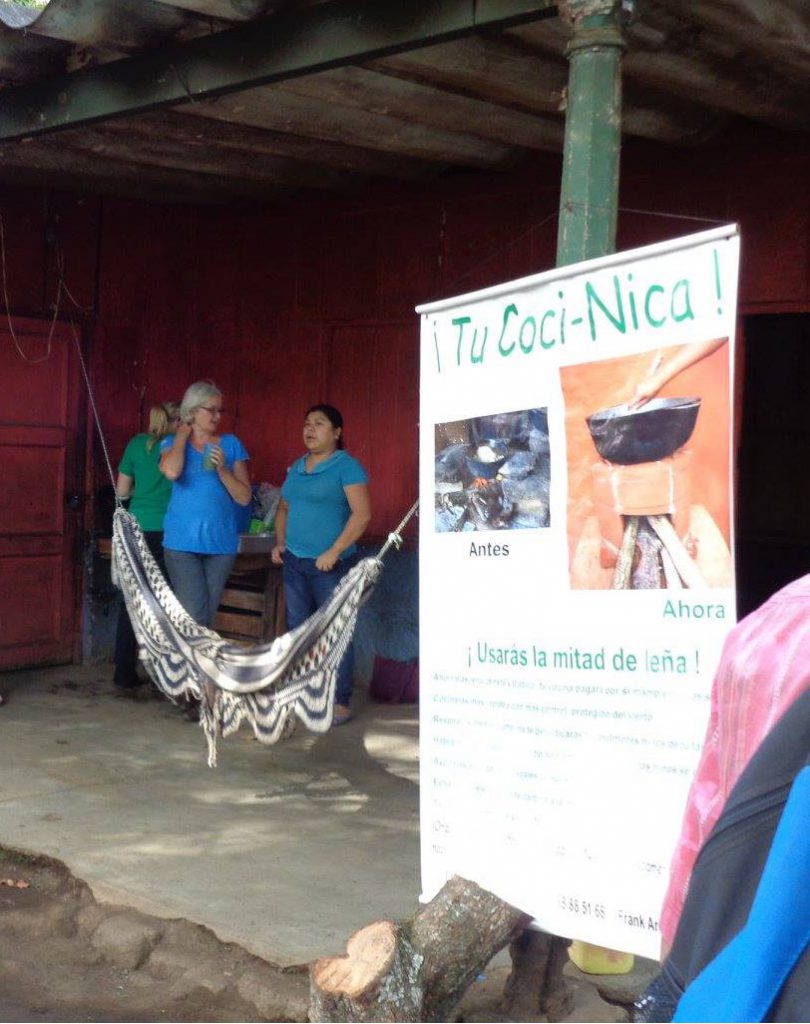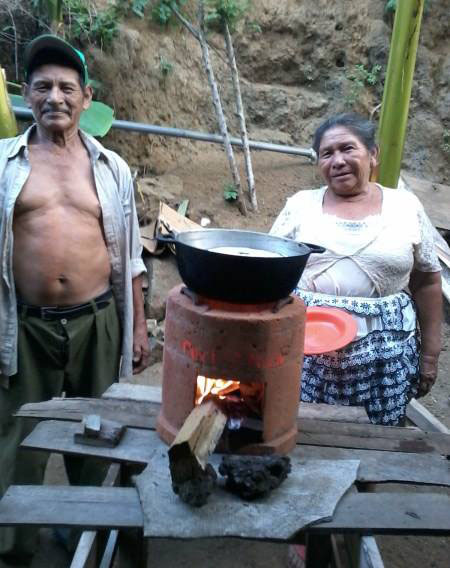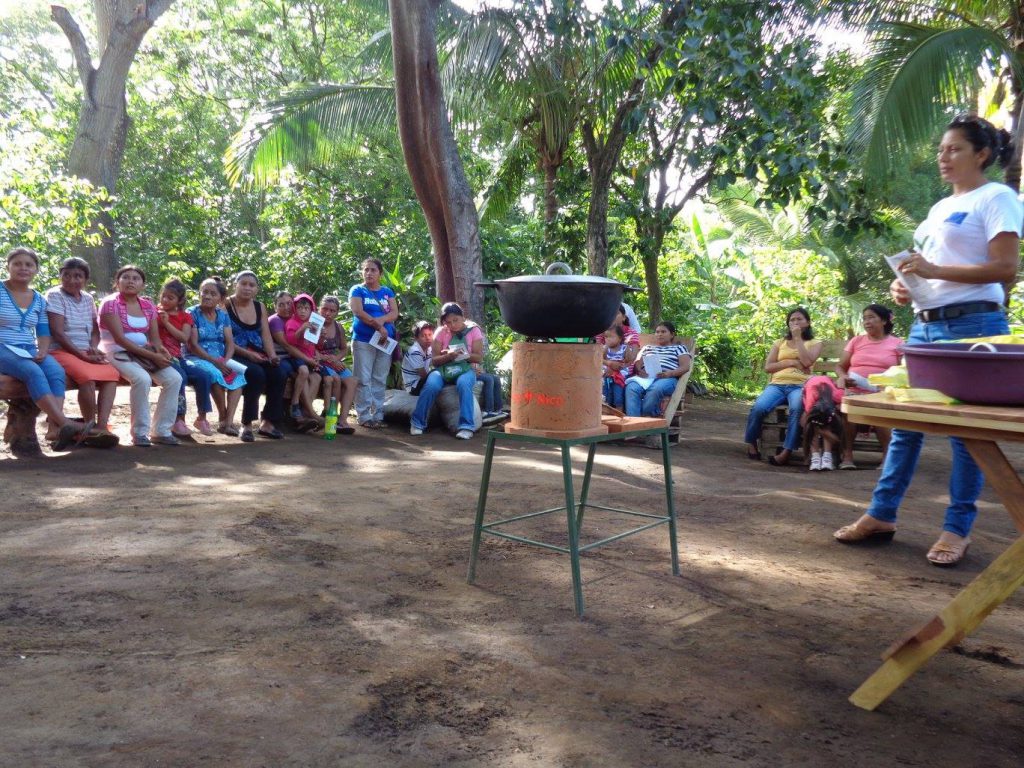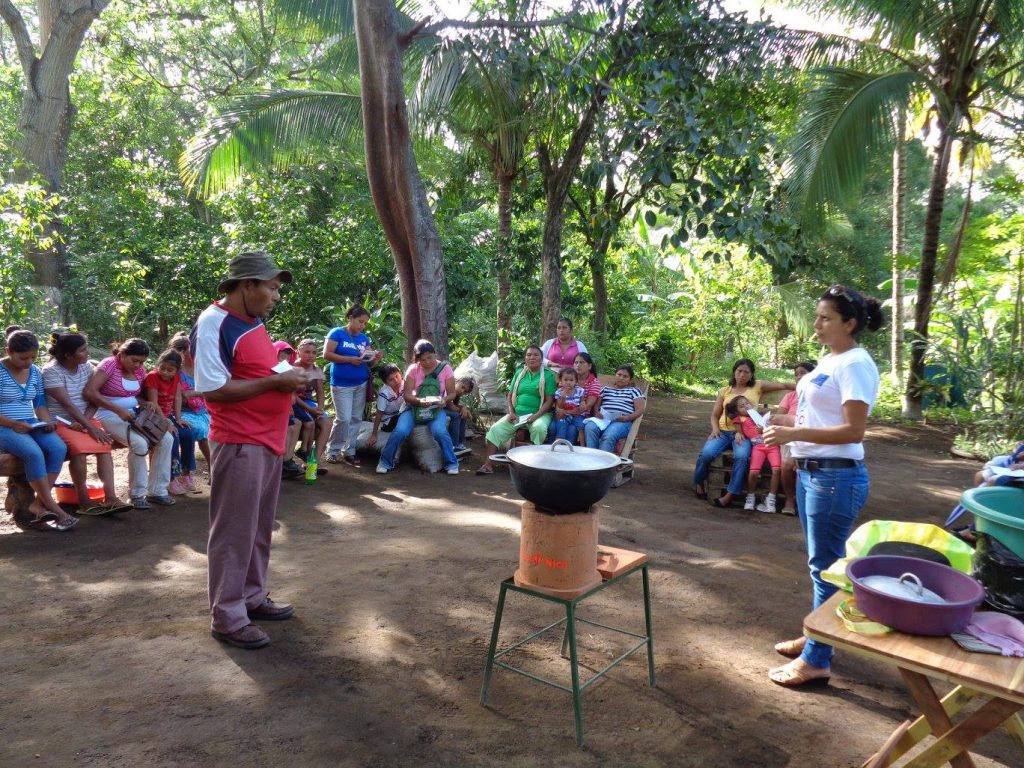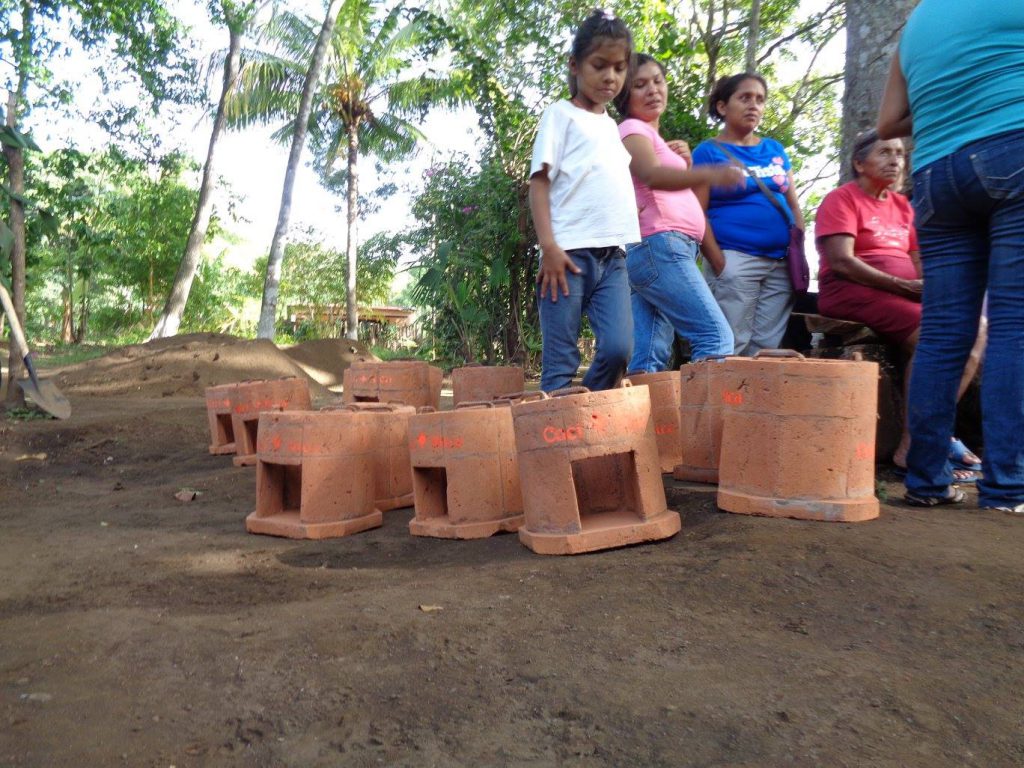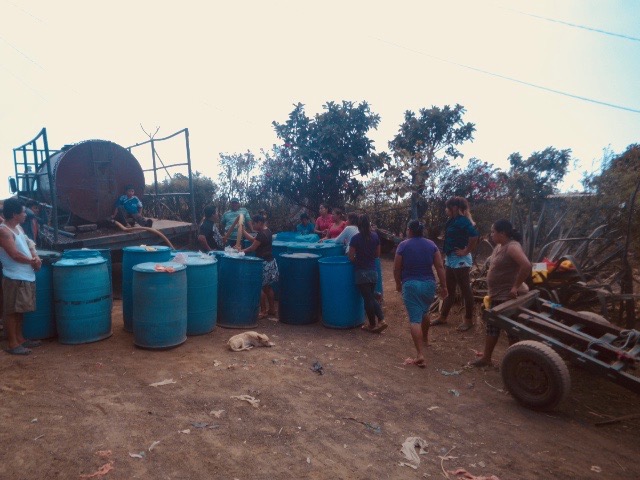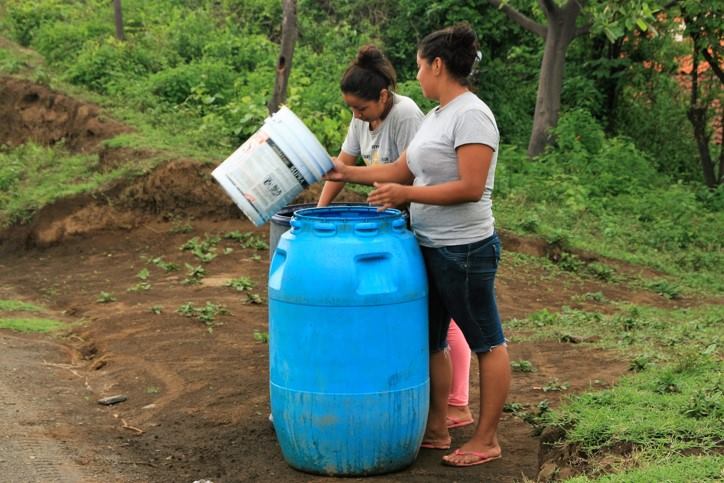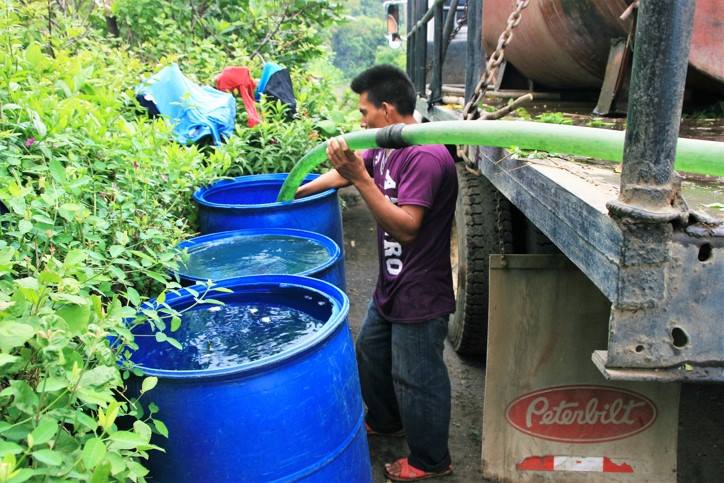This set of projects seeks to 1) construct buildings through environmentally sound materials and techniques, 2) ensure communities have access to a clean, sufficient supply of water and 3) the ability to cook their food in a safer more fuel efficient manner than over open fires.
Eco-building
The main building of La Mariposa was not built to any ‘eco’ principles – though of course it incorporates many environmentally features such as solar power for electricity, solar heated water, collection of rainwater, reuse of grey shower water, minimum use of machines (clothes washed and dried by hand, no deep freezer as all food is fresh) and minimum use of concrete paths to prevent run off in heavy rainfall.
However, as we go along we learn and one of the things our team has learnt about is eco building with locally available materials. We use straw from the rice harvest (we go to Nandaime to buy this), volcanic rock, recycled tyres, caniza (a type of locally grown bamboo), prunings from coffee trees. We generally use thatch for roofs or traditional clay made tiles The buildings at the Group Study Center were the first to be built using these techniques and in 2017 we constructed the buildings for the Chispa de Vida project also incorporating adobe for the wall covering.
The photos below show how beautiful eco building is, as well as being a much more sustainble use of the earth’s resources – for example, straw building uses no water and we only use concrete in the foundations (to protect the walls during heavy rainfall). Sadly, local people see this as a mad idea and most Westerners view it as an option just for the poor. So the idea has not caught on in the way we had hoped it would.
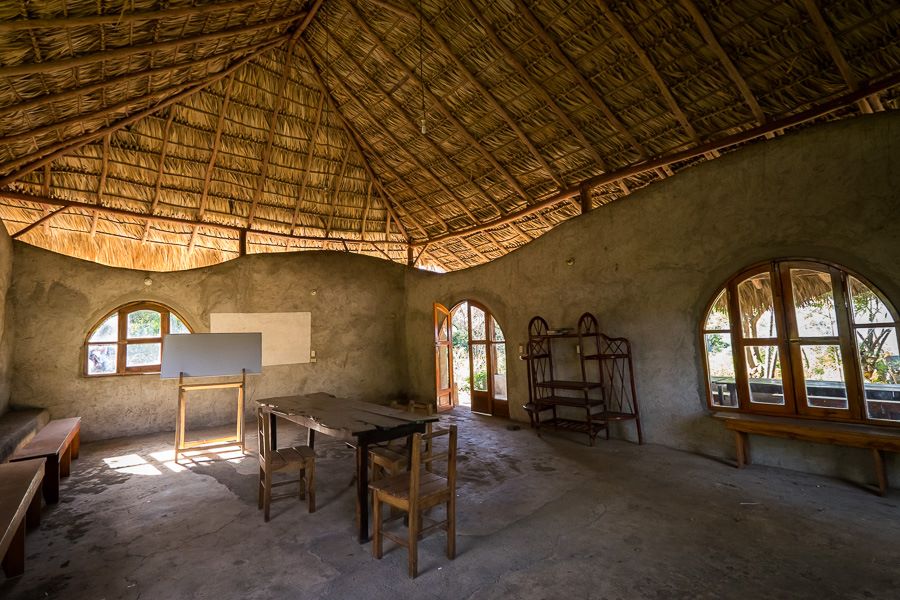
Study Center eco build 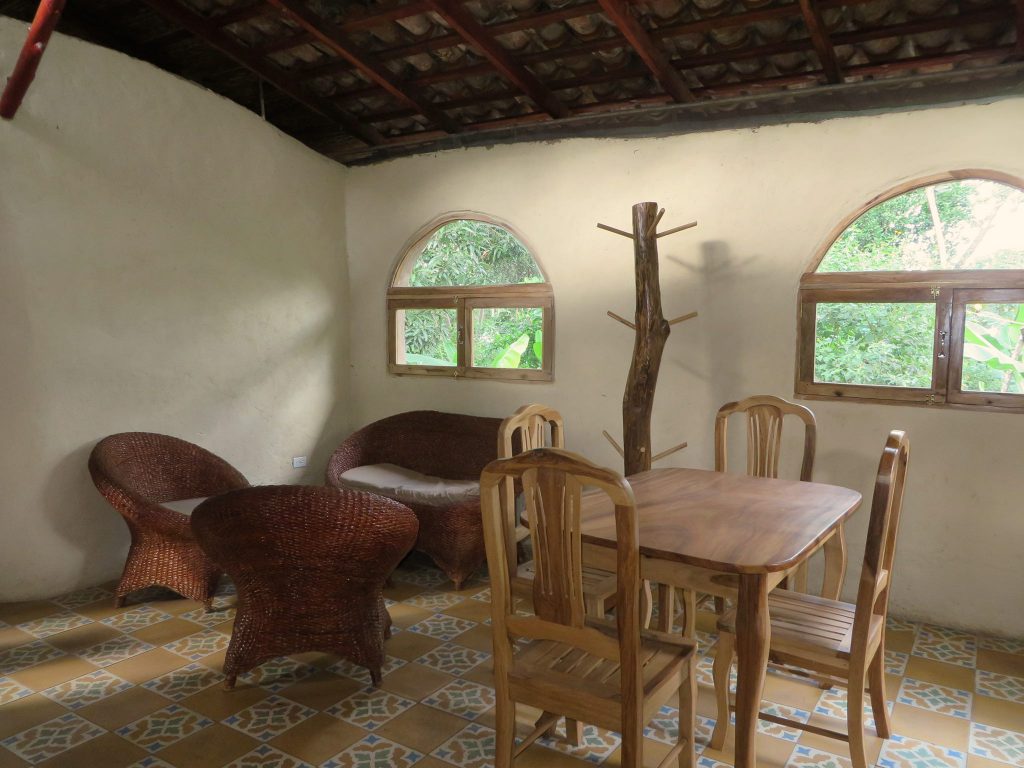
The eco cabin at La Reserva
The photos below were all taken during the process of building the Chispa de Vida project.
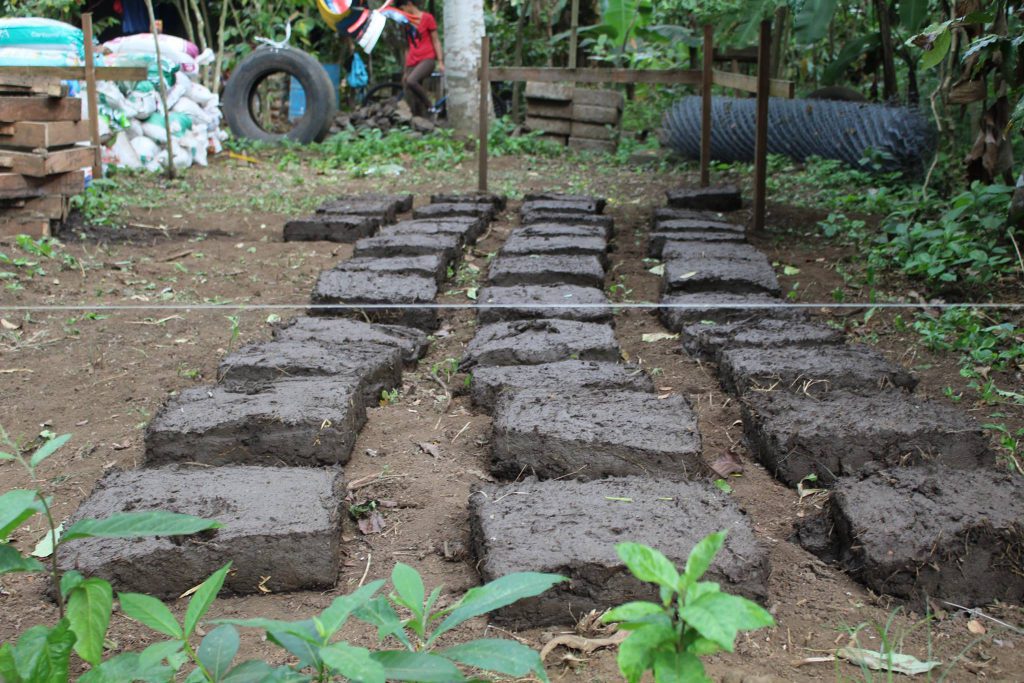
Adobe bricks drying in the sun 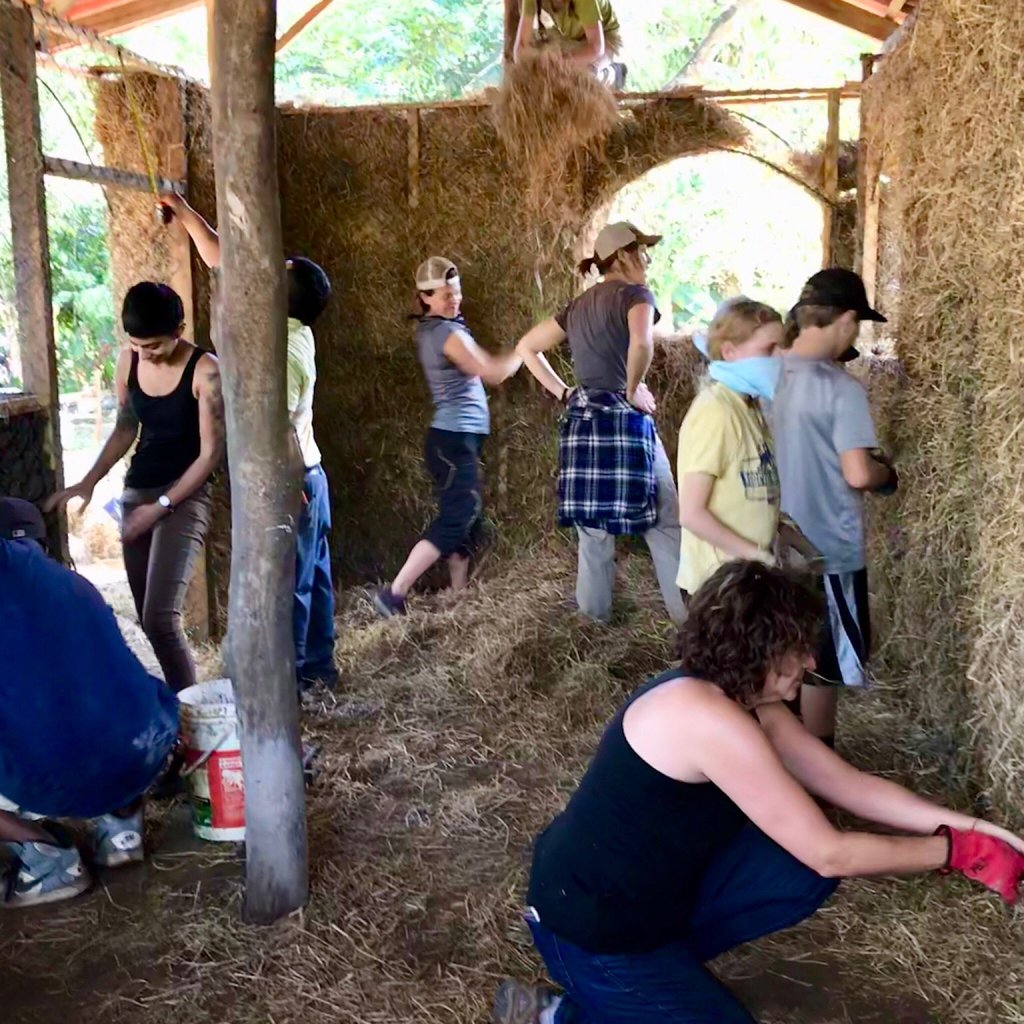
Building walls from rice straw 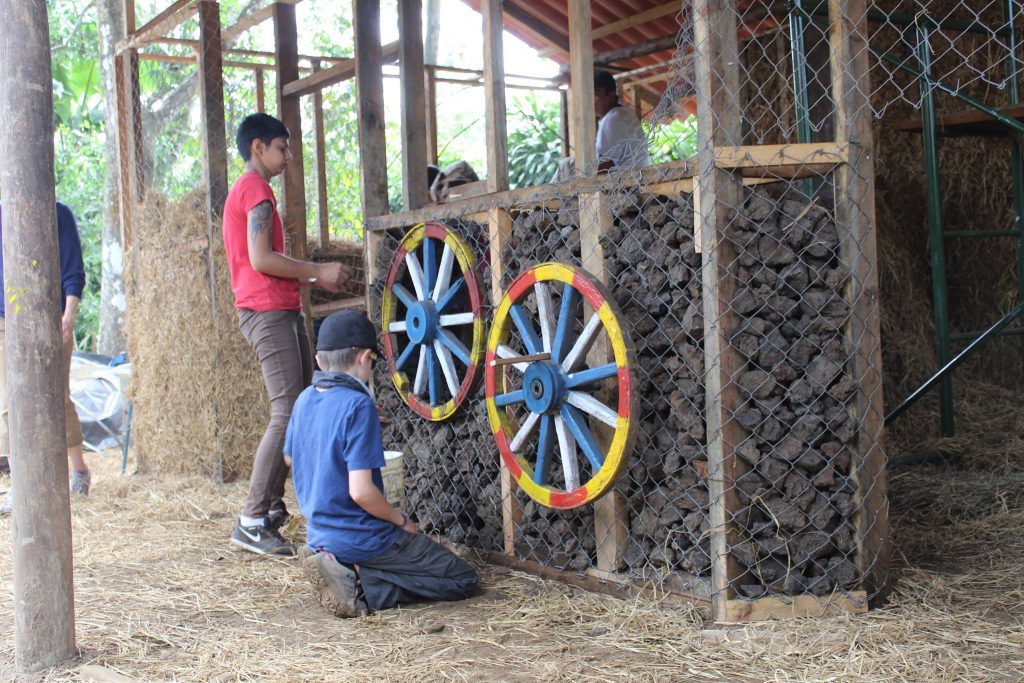
wheels for fun and color, volcanic rock base
Eco-Cookers
One of the many pressures on wooded land is the use of firewood, still the main method of cooking fuel used in poor communities. These eco cookers are designed to use half the amount of wood as regular fires and are much more efficient because they keep all of the heat inside, cooking the food instead of heating up the surrounding air. They also produce much less smoke and are therefore better for health.
Working with Coci-Nica, we have donated over 500 eco-cookers to the poorest families in the community. A project worker was employed to do follow up visits to resolve any problems. Each cooker now costs $20.
When families collect the eco cooker, they are given a demonstation (photos below) and asked, in return for the donation, to plant and care for one or two forest trees!
Water Projects
In the area of La Concha, water comes from an underground aquifer which also provides much of the south part of Managua (where many of the Western style residential and commercial developments are being built – these are water intensive). Every year during the dry season residents of La Concha experience severe water shortages. The water is drawn from government owned wells and then distributed by the municipality. The poorer barrios receive water once or twice a week – those who can afford to build large tanks to store water for the rest of the week. However, the poorest barrios such as Panama and Palo Solo receive no piped water at all. Some families have to trek long distances pushing carts loaded with barrels and buy their water.
Many families collect rain water during the rainy season but cannot store it to last during the six month long dry season, when there is no rain at all.
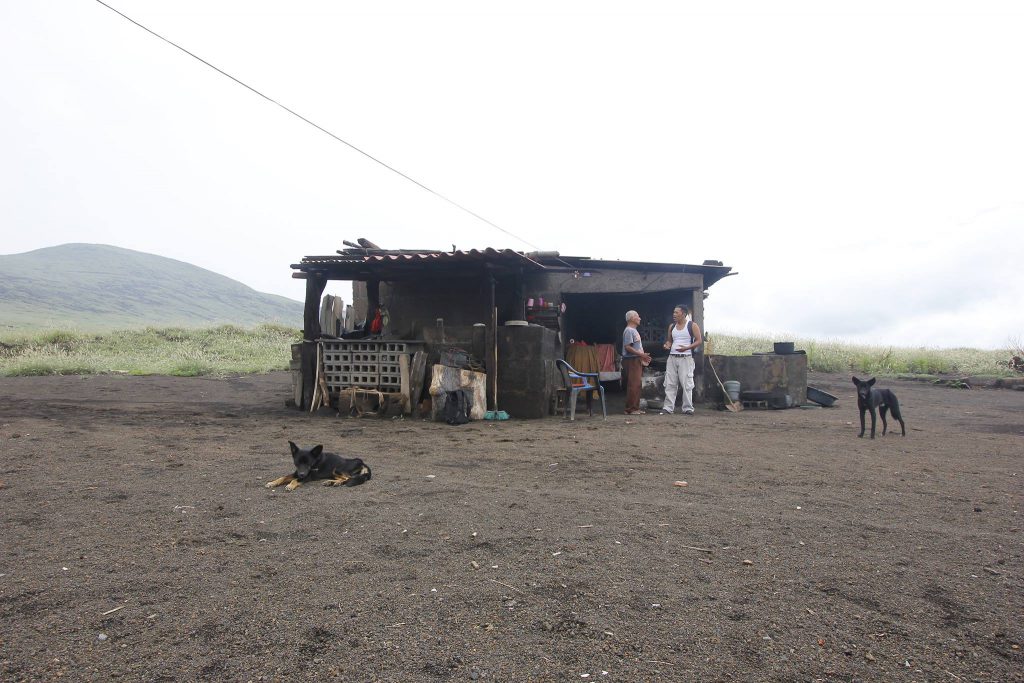
Rural life in the dry season 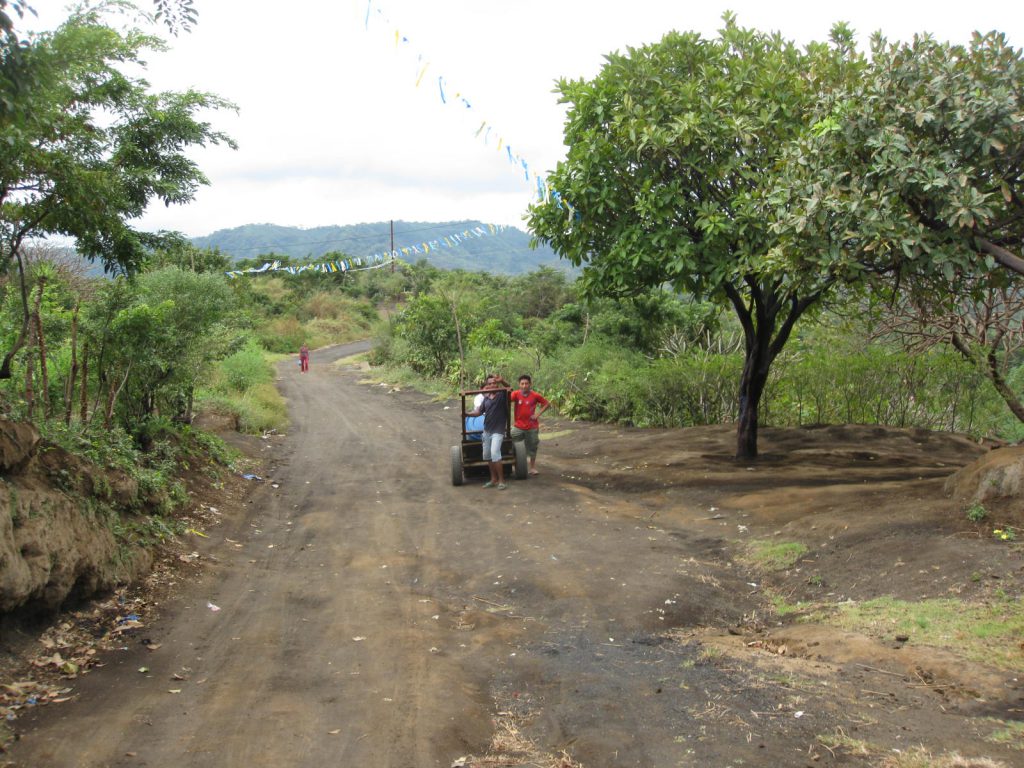
When there is no water 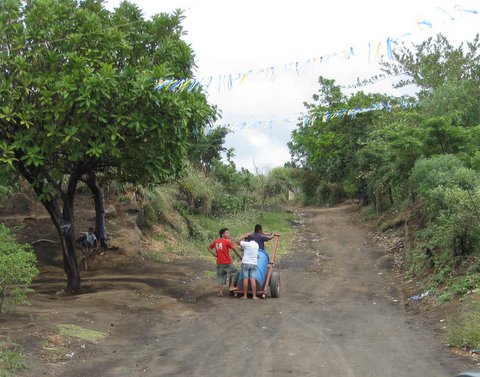
…people use hand carts
We try and help by simply providing extra water for the communities of Panama and Palo Solo. During the dry season, we buy tankers of water wich then deliver it into barrels for the poorest families. See the photos below.
A second major issue is water contamination. No one wants to talk about this, but I have now seen two wells overflowing with soap suds! The amount of soap used especially to wash clothes has to be seeping into water supplies around the world.
We have developed a partial local solution which we tried first in La Mariposa itself. We pass the soapy water through a channel where volcanic sand and rock filters out the soap. This is becoming popular and the local Health Center has asked us to install it in various barrios where the problem of soapy/dirty water in the streets is particularly acute. The problem we have not solved is what to do with the rock once it is soap logged!
Once again, the true solution is to cut consumption…in this case do not wash clothes until they need it and then use less soap! But cleanliness is so important here that again this is seen as just a mad old lady!!!
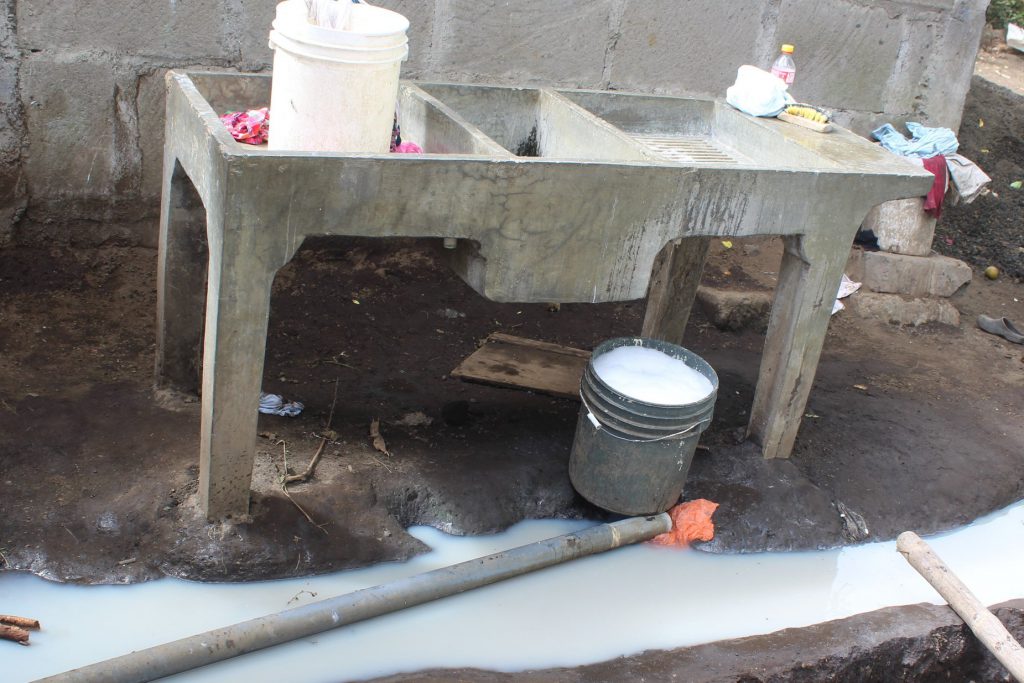
Problem of….. 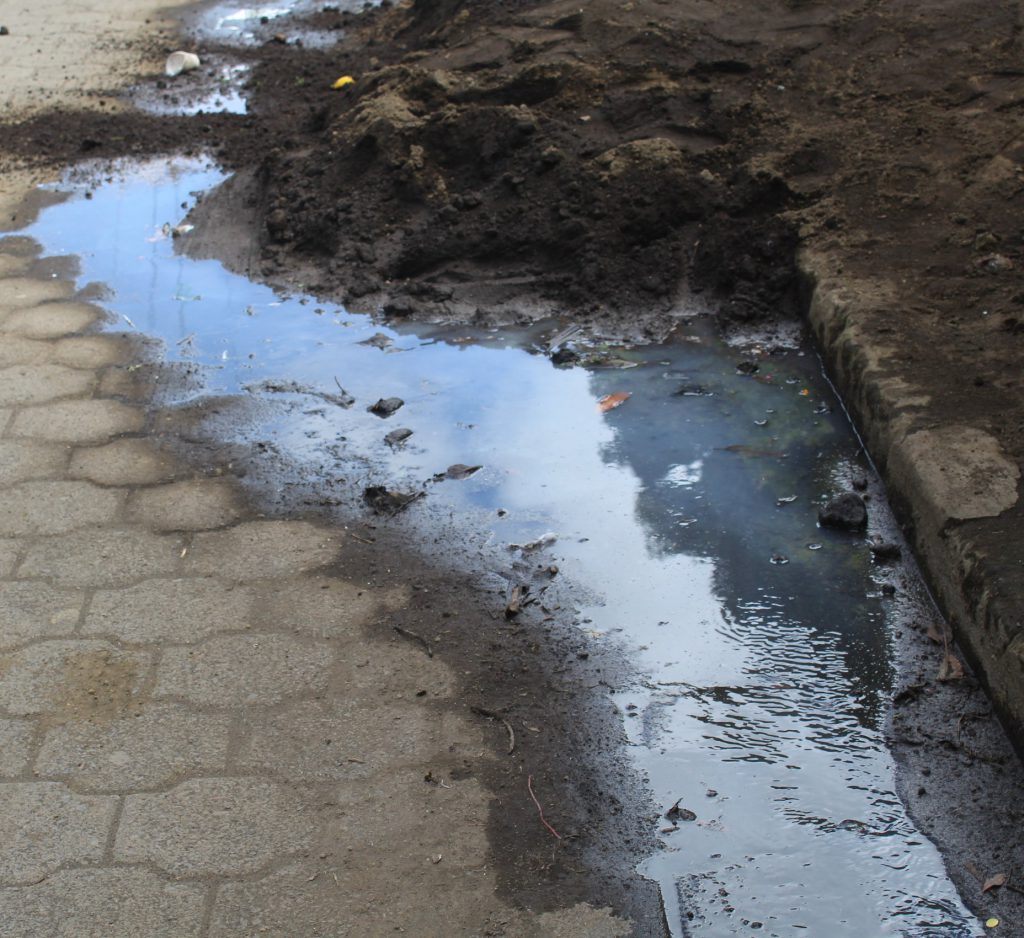
soapy water
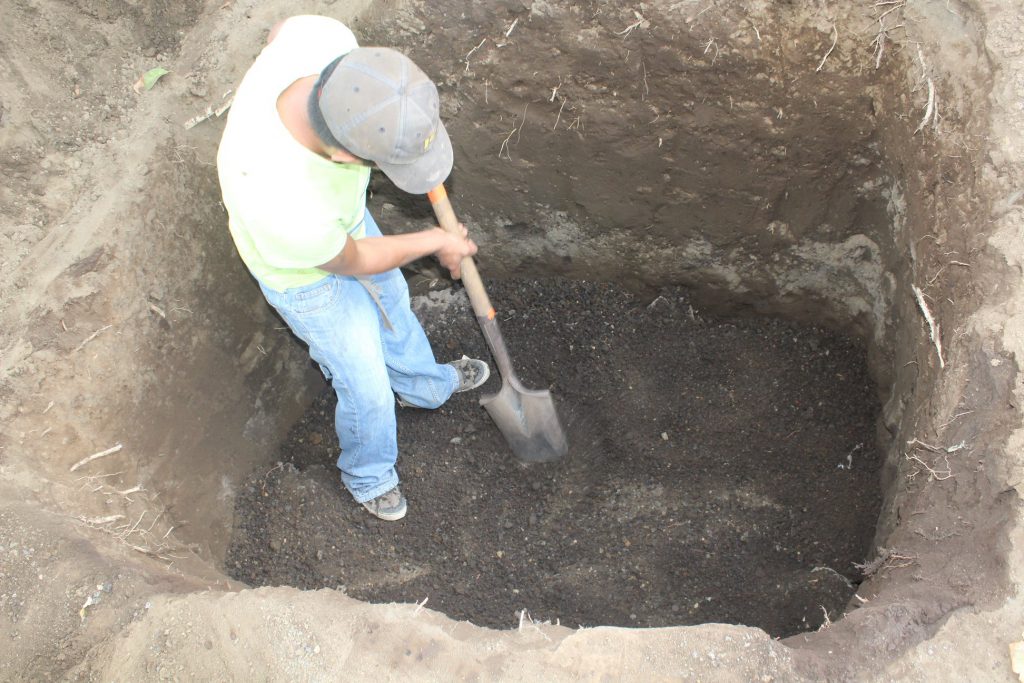
Digging the hole 
filling with volcanic rock to act as a filter

